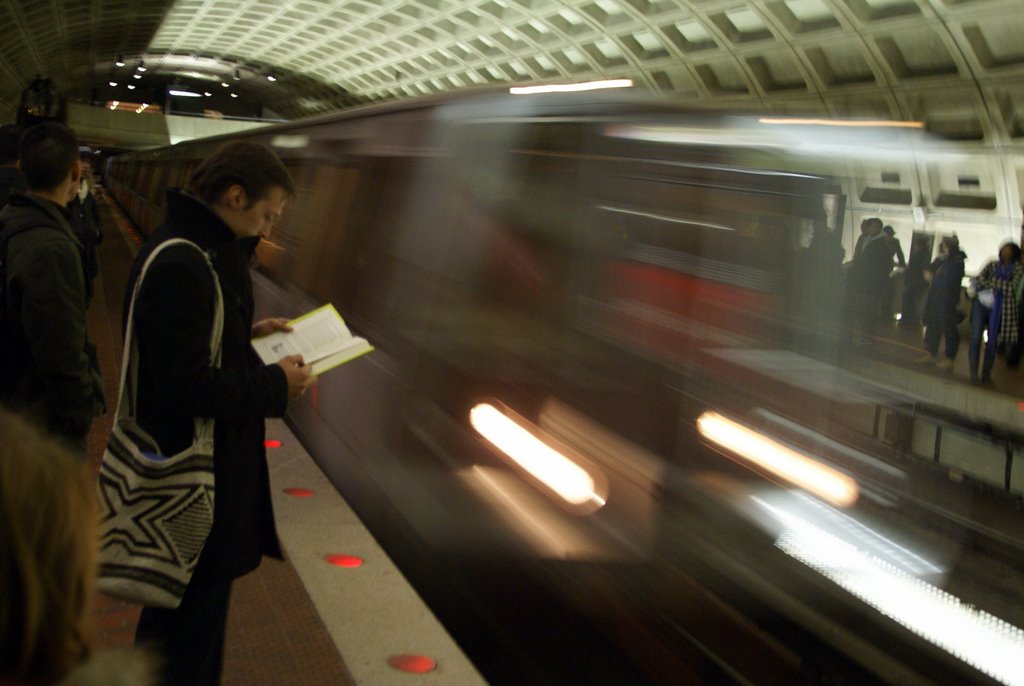
Emergency safety inspection closes subway system, throwing region into transportation chaos.
It’s unprecedented – but it’s the sort of thing we might have to get used to.
The Washington Metropolitan Area Transit Authority (WMATA) shut down the entire Metrorail system in the D.C. region on Wednesday to conduct emergency inspections and repairs of the system’s 600 electric cables.
Considering 700,000 or so people take the Metro each day, the shutdown has upended the normal routine of Washingtonians and folks who live in the greater region. Many office workers like me are telecommuting, but those workers who can’t telecommute are looking to drive on overly congested roads, taking buses, biking or even walking long distances to get to work.
Officials had a pretty good reason to shutdown the system. On Monday, a fire broke out that caused big delays on three of the system’s lines; that fire was eerily similar to one that tragically killed a commuter in January 2015. As the Washingtonian put it: “Better to check them all at once than make spot repairs when something goes wrong.”
But if you live in the D.C. region or have followed the history of Metrorail at all, you know that Wednesday’s shutdown is just the latest development in a series of struggles for the Metro. Once a source of pride for the city and its nearby suburbs, Metro is now prone to regular delays and station shutdowns. There are even several popular Twitter handles chronicling the daily mess.
The reasons for Metro’s continued struggles are rather complex, but it’s clear that officials simply have not invested in keeping the system’s infrastructure up-to-date. Many pushed for things like extended service hours, but then cut funding for regular repair and maintenance work. As Washingtonian reported last year, funding also was often diverted to other projects:
“[A]ccording to former Metro officials, it was hard to get the board excited about routine work. ‘When you open a new rail station, that’s a very sexy thing,’ says Harold Bartlett, a 23-year WMATA veteran who was chief of staff from 1997 to 2006. ‘But when you [want to] buy a new rail-wheel truing machine that makes the wheels not go clickity-clack on the rail cars, that doesn’t get a lot of attention.’”
Now, I know what you are thinking: This is a typical D.C. problem. Of course those fools in Washington can’t get their subway right – they can’t get anything right!
Well, I hate to be the bearer of bad news, but shutdowns like this one might become the norm for your city as well. The American Society of Civil Engineers gives America’s entire public transit system a “D” grade:
“[D]eficient and deteriorating transit systems cost the U.S. economy $90 billion in 2010, as many transit agencies are struggling to maintain aging and obsolete fleets and facilities amid an economic downturn that has reduced their funding, forcing service cuts and fare increases.”
Congress passed a $300 billion bill in 2015 that provides funding for transportation infrastructure projects for six years. It was a big step forward, especially considering the gridlock in D.C. these days. But it isn’t enough, considering there’s a $900 billion backlog for all transportation infrastructure projects across the country.
Along with fixing the deteriorating system, there’s another good reason to invest – doing so could potentially create millions of good-paying, middle class jobs.
Residents of the nation’s capital survive snowstorms and hurricanes, and will make it through Wednesday’s Metrorail shutdown. But it’s just another reminder that we are overdue for a major investment in all of our infrastructure, from roads to airports to bridges to ports to rail transit systems.
